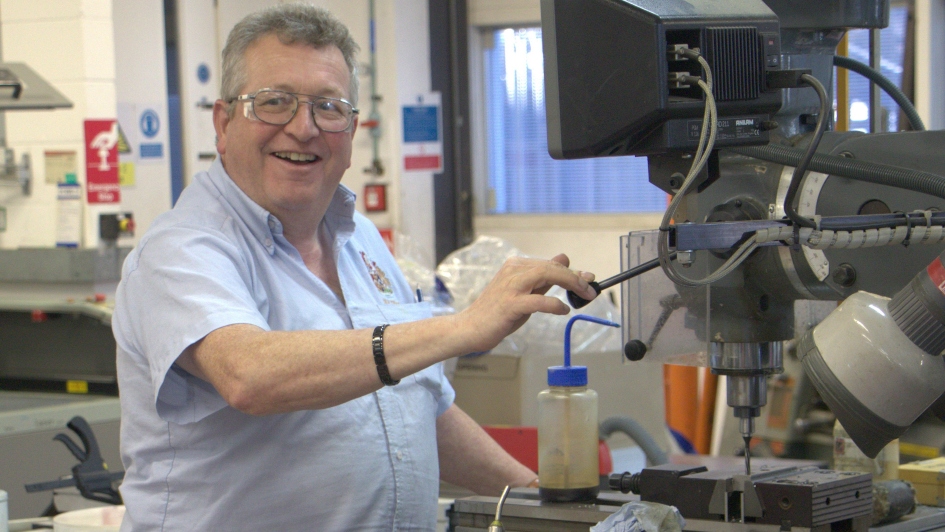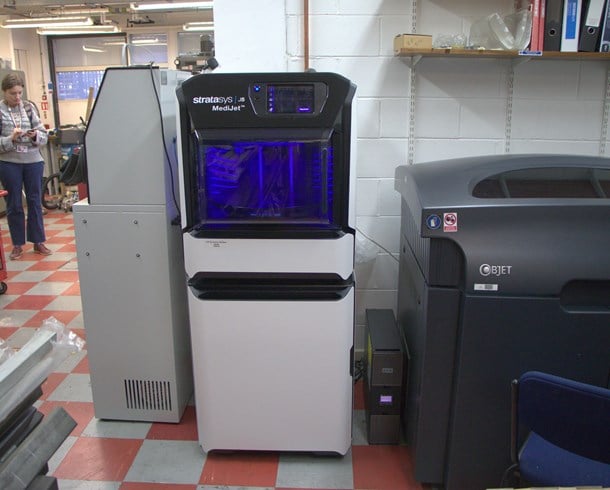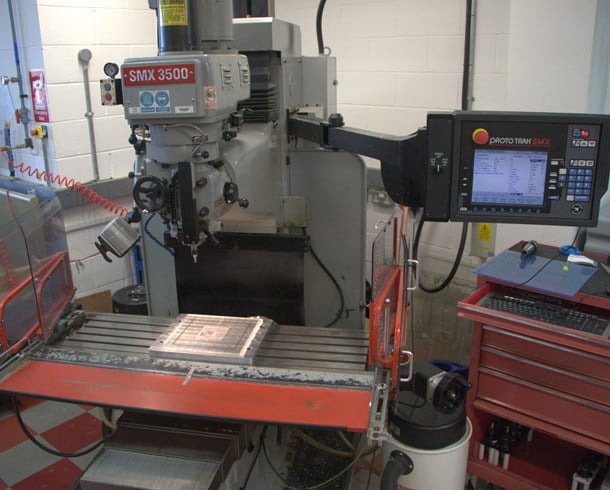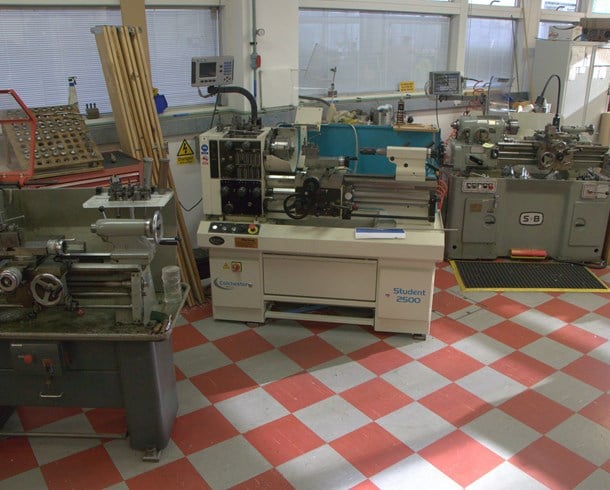Mechanical Workshop and 3D Printing
Our Mechanical Workshop – joint with The Royal Marsden – provides engineering design and manufacture support for our researchers and clinicians, with capabilities ranging from intricate, high precision items to medium-heavy engineering projects.

Image: Clive Long, Senior Mechanical Engineer working in the Mechanical workshop. Credits: ICR
The workshop has evolved greatly over the past 10 years from a traditional mechanical workshop to a high-tech design and manufacturing centre.
The mechanical workshop is fully equipped with many conventional machine tools and an integrated welding shop. The staff have access to modern, computer-aided design tools such as Autodesk Inventor Professional, an XYZ Computer Numerical Controlled milling machine and an Stratasys J5 MediJet rapid prototyping machine.
Examples of projects from our workshop in recent years include 3D models of protein targets and potential drugs to aid our drug discovery scientists, a patented device to slice cancer samples, and models such as ‘AbdoMan’, a 3D-printed torso that has allowed researchers to measure doses of radiopharmaceutical drugs with unprecedented accuracy.
The expert workshop staff are experienced in working in specialist areas such as magnetic resonance imaging, radiotherapy and clinical areas, providing a wide range of specialised knowledge of engineering design and processes, and work closely with other lab and facility managers across the ICR to maintain and repair equipment, supporting our sustainability agenda.
“The ICR workshop take a key role in the development of our experimental set-ups, presenting us with multiple options and helping us optimise our clinical and preclinical procedures.”
– Dr Emma Harris, Team Leader, Imaging for Radiotherapy Adaptation
“The Workshop offers a key service to all divisions, both in terms of cost (a machined part from the workshop is a fraction of the price of commercial supplier) and also time – it’s much quicker to get a replacement part made by Craig and his staff than to order one externally, particularly since Brexit and the supply chain issues it has created.”
– Angus MacGregor, Laboratory Manager of Cancer Biology Directorate
For more information, contact Craig Cummings, Research and Design Workshop Manager, or [email protected].
A milling machine removes material from a work piece by rotating a cutting tool (cutter) and moving it into the work piece. Milling machines, either vertical or horizontal, are usually used to machine flat and irregularly shaped surfaces and can be used to drill, bore, and cut gears, threads, and slots.

3D printing uses digital files to create solid objects by placing sequential material layers. 3D printing, also known as additive manufacturing, is defined as a process in which a digital file is used to create a three-dimensional solid object.

A CNC milling machine makes intricate parts for several industries using subtractive machining technology. The milling machine cuts away at the workpiece and crafts the final piece using computer programmes.

A lathe is a machining tool that is used primarily for shaping metal or wood. It works by rotating the workpiece around a stationary cutting tool. The main use is to remove unwanted parts of the material, leaving behind a nicely shaped workpiece.
